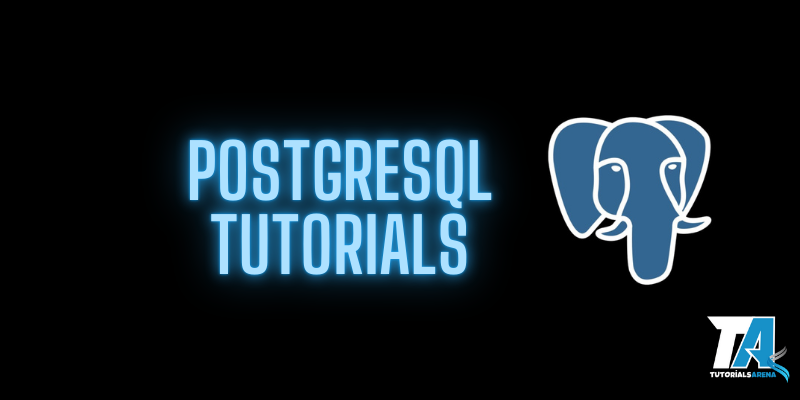PostgreSQL Tutorial: A Comprehensive Guide
Learn PostgreSQL from beginner to advanced concepts. This tutorial covers installation, database administration, SQL queries, and more.

PostgreSQL Tutorial
PostgreSQL is a powerful, open-source object-relational database system. It has been under active development for over 15 years, earning a strong reputation for:
- Reliability
- Data integrity
- Correctness
PostgreSQL is compatible with all major operating systems, including:
- Linux
- UNIX (AIX, BSD, HP-UX, SGI IRIX, Mac OS X, Solaris, Tru64)
- Windows
This tutorial is designed to help you get started quickly with PostgreSQL and become comfortable with PostgreSQL programming.
Audience
This tutorial is intended for beginners to help them understand the basic to advanced concepts of PostgreSQL Database.
Prerequisites
Before starting this tutorial, it is assumed that you already have knowledge of the following:
- What a database is, especially RDBMS (Relational Database Management System).
- Basic understanding of computer programming languages.
- PostgreSQL Contents
- PostgreSQL Tutorial
- PostgreSQL Syntax
- Install PostgreSQL
- Connect to a PostgreSQL Database Server
- PostgreSQL Create Database
- PostgreSQL Select Database
- PostgreSQL Drop Database
- PostgreSQL Create Table
- PostgreSQL Drop Table
- PostgreSQL Show Table
- PostgreSQL Describe Table
- PostgreSQL Alter Table
- PostgreSQL Add Columns
- PostgreSQL Drop Column
- PostgreSQL Change Column Type
- PostgreSQL Rename Column
- PostgreSQL Truncate Table
- PostgreSQL Temporary Table
- PostgreSQL Column Alias
- PostgreSQL Sequence
- PostgreSQL Identity Column
- PostgreSQL Upsert
- PostgreSQL Subquery
- PostgreSQL Data Types
- PostgreSQL Numeric
- PostgreSQL Character
- PostgreSQL Text
- PostgreSQL Varchar
- PostgreSQL Boolean
- PostgreSQL Integer
- PostgreSQL Smallint
- PostgreSQL Bigint
- PostgreSQL Serial
- PostgreSQL Date
- PostgreSQL Time
- PostgreSQL Timestamp
- PostgreSQL Interval
- PostgreSQL UUID
- PostgreSQL JSON
- PostgreSQL HStore
- PostgreSQL Array
- PostgreSQL User-Defined Data Type
- PostgreSQL Schema
- PostgreSQL Create Schema
- PostgreSQL Drop Schema
- PostgreSQL Alter Schema
- PostgreSQL INSERT
- PostgreSQL SELECT
- PostgreSQL UPDATE
- PostgreSQL DELETE
- PostgreSQL WHERE Clause
- PostgreSQL ORDER BY Clause
- PostgreSQL GROUP BY Clause
- PostgreSQL HAVING Clause
- PostgreSQL DISTINCT
- PostgreSQL LIMIT
- PostgreSQL FETCH Clause
- PostgreSQL Conditions
- PostgreSQL AND Condition
- PostgreSQL OR Condition
- PostgreSQL AND/OR Condition
- PostgreSQL NOT Condition
- PostgreSQL LIKE Condition
- PostgreSQL IN Condition
- PostgreSQL NOT IN Condition
- PostgreSQL BETWEEN Condition
- PostgreSQL EXISTS Condition
- PostgreSQL View
- PostgreSQL JOIN
- PostgreSQL INNER JOIN
- PostgreSQL LEFT JOIN
- PostgreSQL RIGHT JOIN
- PostgreSQL FULL JOIN
- PostgreSQL CROSS JOIN
- PostgreSQL SELF JOIN
- PostgreSQL NATURAL JOIN
- PostgreSQL Trigger
- PostgreSQL Create Trigger
- PostgreSQL Drop Trigger
- PostgreSQL Alter Trigger
- PostgreSQL Disable Trigger
- PostgreSQL Enable Trigger
- PostgreSQL Indexes
- PostgreSQL Create Index
- PostgreSQL Drop Index
- PostgreSQL List Indexes
- PostgreSQL Unique Index
- PostgreSQL Index on Expression
- PostgreSQL Partial Index
- PostgreSQL Reindex
- PostgreSQL Multi-Column Indexes
- PostgreSQL Constraints
- PostgreSQL Primary Key
- PostgreSQL Foreign Key
- PostgreSQL Unique Constraint
- PostgreSQL Check Constraint
- PostgreSQL NOT NULL Constraint
- PostgreSQL Versions
- MongoDB vs PostgreSQL
- PostgreSQL vs SQL Server
- PostgreSQL vs MariaDB
- PostgreSQL vs Oracle
- PostgreSQL vs SQLite
- SQL Interview Questions
- PL/SQL Interview Questions
- SQL Quiz